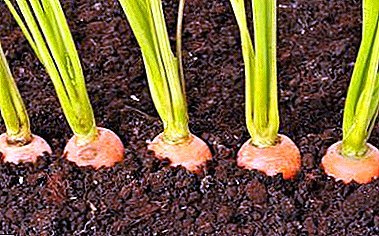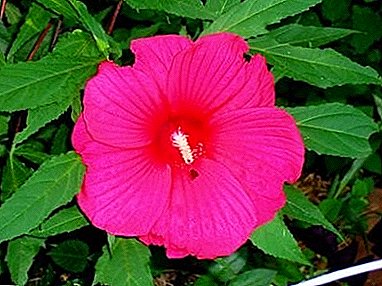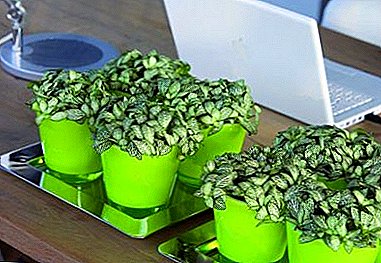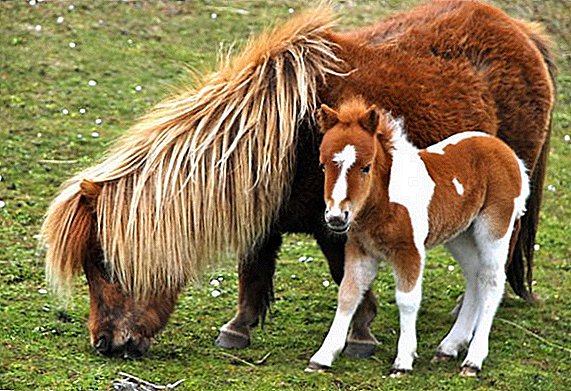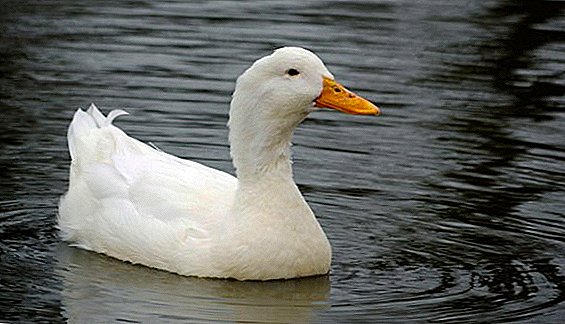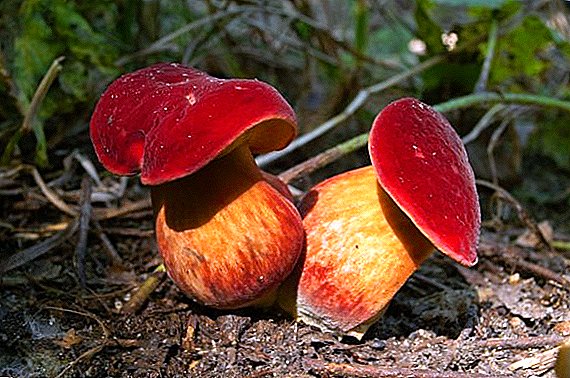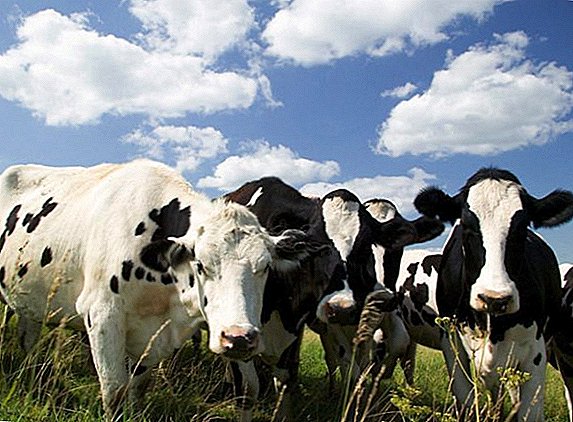 Cattle (cattle) - is one of the most valuable species of farm animals. According to the zoological classification of cattle, it is classified as a mammal, an order of artiodactyls, a suborder of ruminants, a family of bovids and a subfamily of bulls.
Cattle (cattle) - is one of the most valuable species of farm animals. According to the zoological classification of cattle, it is classified as a mammal, an order of artiodactyls, a suborder of ruminants, a family of bovids and a subfamily of bulls.
The main purpose of these animals is the production of meat and milk, getting hides, sometimes wool, as well as pulling force. In the modern world, cattle breeding is developing more and more actively.
In this article we will try to tell the most comprehensive and accessible about the economic and biological qualities of cattle.
Constitution and exterior
The body structure of a representative of the cattle is predetermined by heredity and depends on the conditions of detention. In dairy and beef cattle, it is customary to classify animals according to the system proposed by P. M. Kuleshov.
The livestock scientist divided cattle into four constitutional types:
- Rude. This group includes mainly working and primitive cattle. The animal is characterized by a large head with powerful horns and a massive skeleton. Thick skin of individuals covered with thick hair. Muscles strong, fatty tissue moderately developed.
- Gentle. For individuals of this type is characterized by thin skin, delicate hair, moderately developed muscles and light bones. The gentle structure of the body is characteristic of animals, both meat and dairy.
- Tight (dry). Animals of dense build are characterized by high productivity and good vitality. The skin is thin and elastic. The fatty layer and hypodermic cellulose are poorly developed. The skeleton and musculature are strong. This group is especially valued among experienced breeders when raising dairy and meat livestock.
- Loose (raw). The individuals of the loose constitution have thick skin, strongly developed subcutaneous fatty tissue, a weak skeleton, and bulky muscles with reduced tone. Cattle quickly gaining weight, which makes it possible to receive generous portions of meat products. At the same time, milk productivity in this case is not sufficiently developed.
Important! It is necessary to acquire cubs in the presence of a specialist. Only an experienced breeder or veterinarian can judge the health of the external data, gait and other characteristics.
Constitutional types in "pure form" are quite rare. Typically, the characteristics of different groups appear to varying degrees. Such animals are classified as mixed or intermediate type.  New systematics of cattle developed by Yu. K. Svechin. For the basis of his classification, the scientist took the growth rate and the formation of a cub into an adult. Svechin proposed dividing cattle into three constitutional types: rapidly, moderately or slowly forming species.
New systematics of cattle developed by Yu. K. Svechin. For the basis of his classification, the scientist took the growth rate and the formation of a cub into an adult. Svechin proposed dividing cattle into three constitutional types: rapidly, moderately or slowly forming species.
In adults, sexual dimorphism is well pronounced. Bulls surpass cows in live weight by an average of 40-50%. Males are distinguished by a noticeably greater growth, their front part of the body is highly developed. Insufficiently expressed masculinity of the male or femininity of the female is considered a deviation from the norm.
The cattle are characterized by age-related changes in body build. So, cubs are born with long limbs, a short and flat body, with a slightly raised back end.
Did you know? The world's largest cow weighed 2,270 kilograms. Her name was Mount Katadin. In the girth she was almost 4 meters, and at the withers - 1 meter 88 centimeters.
The average live weight of a newborn individual is 6-8% of the weight of the animal in adulthood, the length of the extremities is approximately 70%, the height at the withers is 55%, the width of the body is 30-35%, the depth and length of the body is 40-45% of the corresponding sizes in an adult animal. With age, the exterior gradually changes due to the different rate of formation of the skeleton, as well as individual organs and tissues. 
Digestive system and feed processing
The gastrointestinal tract of cattle is adapted to digest large volumes of vegetable feed. KRS is included in the group of ruminants with a multi-chamber stomach. It is precisely due to this peculiarity that animals can master fiber, which is contained in large quantities in the stems and leaves of plants.
The digestive tract begins with the mouth opening limited to the lips. It is followed by the oral cavity in which the tongue is located. Taste nipples on the tongue help to examine the food to the taste.
The front teeth (incisors) of cattle are only on the lower jaw. During grazing, the animal with the lower incisors presses grass to the gums of the upper jaw and tears it away. In the oral cavity, the grass is ground by the teeth and moistened with saliva.
It will be useful for you to read about what needs to be done if the cow has poisoned or devoured crushed meat.
The cattle stomach consists of a cicatrix, a net, a book and an abomasum (true stomach), the other three chambers are called foregutts. In adults, the scar capacity is approximately 80% of the total stomach volume. The saliva softened feed enters the scar.
Poorly ground particles burp back into the oral cavity, chew again and swallow. Complex microbiological processes occur in the rumen, as a result of which the food is fermented.  The structure of the digestive tract of the cow From the rumen the food mass enters the net. The mucous membrane of the mesh resembles a honeycomb: large particles of food linger here. Insufficiently crushed coarse feed acts on the front wall of the net, stimulating repeated chewing gum.
The structure of the digestive tract of the cow From the rumen the food mass enters the net. The mucous membrane of the mesh resembles a honeycomb: large particles of food linger here. Insufficiently crushed coarse feed acts on the front wall of the net, stimulating repeated chewing gum.
From the grid, the gruel passes first into the book, then undergoes mechanical and biological processing in the foreskins. Further assimilation of nutrients occurs in the same type as in animals with a single-chamber stomach.
That is, food masses fall into the abomasum, where they are split by the action of hydrochloric acid and pepsin. Then gruel in small doses penetrates the small intestine. Here the villi of the mucous membrane suck up the decay products of nutrients.
Important! For successful breeding of cattle is very important to have a strong feed base. Seasonal grazing on a meadow rich in vegetation helps a good weight gain. Be sure to use feed additives: feed, beets, cakes, silage, cereals. It is equally important to ensure the timely supply of fresh water.Simple substances that have passed into the blood and water move to the liver, then travel with the blood to the heart, lungs and then spread throughout the body. The final stage of absorption of nutrients occurs in the large intestine.
Video: the work of the stomach of ruminants
Cattle productivity
Nowadays cattle are highly productive, genetically improved breeds of cows, buffaloes, yaks and other animals. When breeding these farm animals, man provides himself with indispensable food products (milk and meat).
Dairy
In cattle dairy products are of the greatest value. The milk productivity of the female is expressed by the quantitative and qualitative characteristics of milk. The time during which it gives milk, that is, the period from calving until the cessation of milk excretion from the mammary glands, is called the lactation period.
The best breeds of dairy cows include such breeds as Yaroslavl, Kholmogory, red steppe, Dutch, Ayrshire and Holstein.
The duration of this phase in cows is 10 months (300-305 days). A modern dairy cow can produce approximately 80 liters of full-fat milk per day, which is 24 thousand liters of milk per lactation period. The biological significance of milk surpasses all other foods found in nature.  Cow's milk is absorbed by the human body by 95-98%. It contains beneficial proteins, lipids, carbohydrates, minerals and biologically active substances (vitamins, enzymes, hormones). But such components of milk as casein and milk sugar are not found anywhere else in natural products.
Cow's milk is absorbed by the human body by 95-98%. It contains beneficial proteins, lipids, carbohydrates, minerals and biologically active substances (vitamins, enzymes, hormones). But such components of milk as casein and milk sugar are not found anywhere else in natural products.
Many factors influence dairy productivity, both hereditary and non-hereditary:
- In most cases, good milk yield is due to high-quality and regular feeding, as well as proper care for the animal. Of particular importance is a full balanced feeding in the period of the pasture and dry period.
- The age of animals also affects milk production. Young females produce less milk than individuals who have completed growth. In cattle, the growth period lasts about 5 years, so until the 5th or 6th lactation the milk yield of the cows increases, then for several years it stays at the same level, and since the 8th or 9th lactation it decreases sharply. With favorable external conditions, high milk yield can be maintained at the age of 12-15 years.
- The live weight of the animal has a significant effect on milk production. An increase in animal mass to the optimal level (depending on the breed) has a positive effect on milk production. At the same time, the excess of this indicator indicates a tendency to obesity.
- An important role is played by the age of the first insemination. Chicks should be inseminated at the age of 16-18 months, while their live weight should be 340-400 kg, that is, 70% of the live weight of an adult cow. Thus, calving in cows should take place at the age not later than 27 months.

Meat
At slaughter of cattle, the yield of meat is 48-63%, the yield of adipose tissue ranges from 2 to 14% of the total weight of the carcass, and the average yield of bones is 18-20%. The nutritional value of meat is estimated by its calorie content. Meat productivity, weight gain rate, as well as meat quality characteristics vary depending on the breed of the animal, its age, fatness, and sex.
Animals of specialized meat varieties demonstrate the highest results (for example, Kalmyk breed, Hereford, Kazakh white-headed, Aberdeen-Angus, Limuzinskaya, Shorthorn). Dairy and combined type livestock are somewhat less productive.
The fattening of the beef bull breed significantly reduces both time costs and feed costs. At the same time, the output of high-quality meat from slaughter material of an individual weighing 500 kg is 65%. Such indicators guarantee high profit and profitability of the enterprise.
Did you know? Cows have an almost panoramic 360-degree view, which allows them to observe the approach of a person or a predator from all sides. At the same time they see only two colors - red and green.In addition to the species, the meat production is greatly influenced by the conditions for raising cubs, as well as feeding and maintaining adult individuals. Abundant and complete nutrition provides high average daily gains.
 When fattening adult cattle, the increase is 850-1000 g, and the growth rate of the young is 1200-1500 g. If the cattle gets moderate portions of food, the average daily gain will not exceed 400-500 g.
When fattening adult cattle, the increase is 850-1000 g, and the growth rate of the young is 1200-1500 g. If the cattle gets moderate portions of food, the average daily gain will not exceed 400-500 g.Masthead and sex hunting
After calving (childbirth), the hunting stage of the female begins already after 21-28 days, and it should be inseminated at this very moment. The leak (vaginal mucous discharge) begins about 15 hours before the start of the hunt (positive reaction to the male). At this point, the cervix is revealed.
By the end of estrus, the secretions become turbid, which indicates the rejection of epithelial cells in the labor apparatus. Normal estrus should last up to 30 hours (from 10 to 56 hours). Depending on the species, the hunt of a female can last from 3 hours to one and a half days.
It is impossible to identify the hunt, only estrus and sexual arousal are obvious. This stage can be determined only with the help of a male probe or a full-fledged male. Or, you can roughly estimate the onset of the hunt based on the visible symptoms.
Familiarize yourself with the methods of artificial insemination of cows at home.
The female eats worse, becomes restless, reduces milk yield, and its external genitals redden and swell. The female in the hunt does not just show a desire to get close to the male, but also allows him to make a cage. The second half of the hunt is the most favorable time for insemination.
Video: cow insemination The sperm introduced into the birth canal during this period maximizes the chance of fertilization of the egg. It can be observed that the female bends back, lifts and pulls the tail aside. There are frequent urination in small portions. Shortly before the end of the hunt, the female's body temperature drops by 1-1.5 ° C.
Did you know? The followers of the Hindu religion consider a cow to be a sacred animal, therefore a wound in India is fined with a fine of 10 thousand rupees ($ 160). And for the murder of this animal a person can get a prison sentence (up to 5 years).
In conclusion, cattle are characterized by endurance, unpretentiousness and adaptability to various natural conditions. To breed these animals is profitable and easy. But before you need to learn about them as much information as possible, as well as decide in advance for what exactly you want to keep cattle. We hope that our short review answered your questions.


